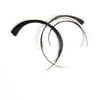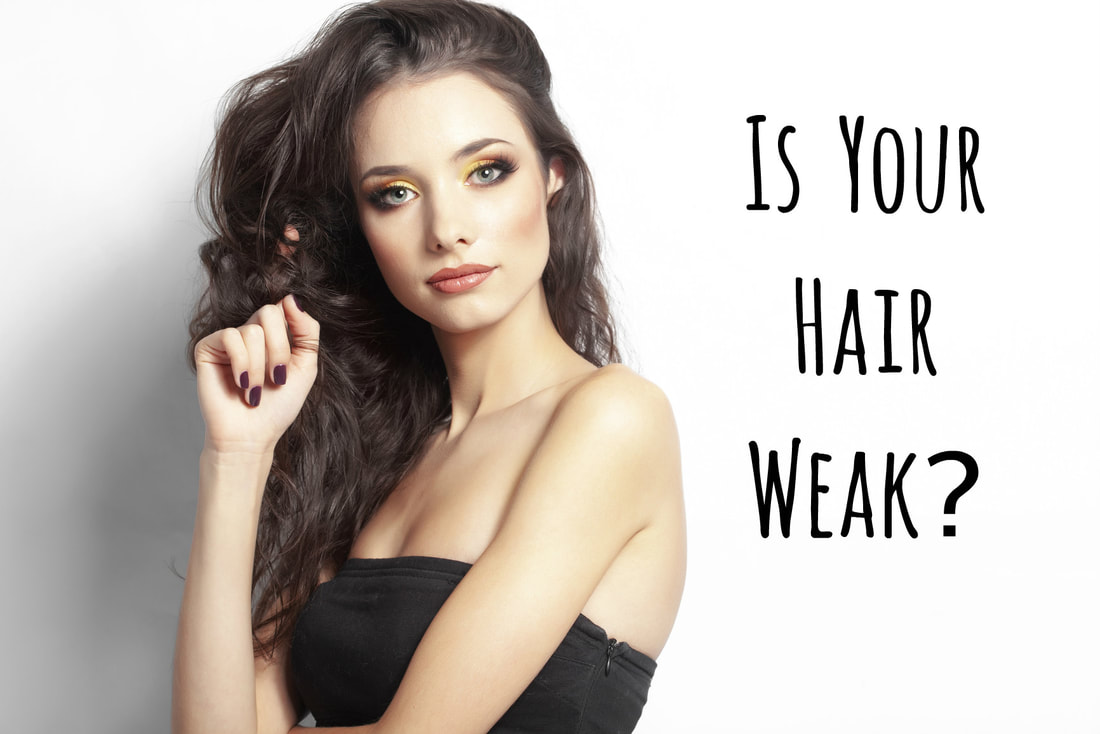|
BRAZIL
We know that moon phases affect the tides and cause 99 percent of “I’ll just have one more drink” hangovers. (We made that last one up.) (Sounds right, though.) Women in Brazil also believe it impacts their hair. “I try to trim my hair once a month when it’s a full moon,” says São Paulo–born Victoria’s Secret model Lais Oliveira. If it sounds like superstition, that’s because it is. “Brazilians are a very superstitious people in general, and they believe that they can cut their hair during different moon phases to get different results,” says Valeria Cole, the founder of Teadora, a hair- and skin-care line that uses natural ingredients found in the rain forests of Brazil (like maracujá, pitanga, and buriti). “A new moon strengthens the strands, a crescent moon accelerates growth and increases shine, and a full moon means more volume. My mom believed this with all of her heart and would scold me for cutting my hair whenever I wanted.” Moon phases aside, Brazilians also have to worry about sand, sun, and seawater turning their hair — which is often naturally curly — dry, frizzy, and brittle. “Women in Brazil do a lot of keratin treatments to hydrate their hair,” Oliveira says. “Keratin treatment” is a catchall term, though, that can mean anything from deep conditioners to far more noxious formulas. The legend goes that once upon a time an embalmer in Brazil found that the formaldehyde he used on corpses also straightened their hair. Brazilian women’s desire for straight hair ran so deep that the carcinogen was soon incorporated into salon treatments, called escova progressiva (progressive blow-dry). They eventually migrated to the U.S. — we’re guessing you’ve heard of the Brazilian blowout. “Many of the formulas made by Brazilian Blowout and other companies are now formaldehyde-free,” says Cole. “But definitely not all.” Cole recommends an entirely innocuous Brazilian hair-smoothing technique that long pre-dates the escova progressiva: “Touca de cabelo has been passed down for generations. You pin your hair tightly to your head and then cover it with an old stocking overnight. In the morning, it’s perfectly straight and super soft.” Brazilian blogger Camila Coutinho’s favorite hair smoother is a conditioning cocktail of protein, keratin, and vitamin B5. “It’s created in a hair salon called SpaDios in São Paulo,” she says. SpaDios’s menu also includes laser treatments, scalp suctioning, and velaterapia — a popular local tradition that involves twisting the hair in small sections and running the flame of a candle along the length of it to burn off split ends. For at-home split-end mending, Cole looks to a simple Brazil-nut-oil treatment or a DIY chocolate mask (combine cocoa with cornstarch and water), which we imagine smells a hell of a lot better than burning hair. If this all sounds a little high-maintenance, that’s because it is. Brazil has one of the largest hair-care markets in the world. In 2014, Brazilian women collectively spent more than $7 billion on their hair. One study found that Brazilian women use three times as many post-treatment products as American women. One particularly popular option is “combing cream,” a detangler-and-styling-cream mash-up that’s great for coddling curls. (You can now find a few options on our shores: We like Pantene Pro-V Moisturizing Combing Crème, $5.) And curl coddling is something Brazilians are doing a lot more of lately. “Hair straightening has always been very popular in Brazil, but over the last few years, a black-consciousness movement has developed, with street celebrations of kinky and curly hair as a political act,” says sociologist Chelsea Johnson. “There’s a new market for curly-hair products.” A version of this article originally appeared in the March 2018 issue of Allure. INDIA
The next time a Bollywood actress invites you over for a girls’ night, take a big whiff of the kitchen. Smell that? It’s fresh flowers and coconut. They’re staples in the DIY hair masks that most Indian women are cooking up from a young age, says model Natasha Ramachandran, who is from Pune. “Indian women are gifted with thick, healthy hair. In order to keep our scalps hydrated and nourished, we use coconut- and almond-oil masks. My mother, my grandmother, my aunt, my sisters — we all grew up doing it.” Model Rasika Navare, also originally from Pune, massages coconut oil through the length of her hair once a week as well; sometimes she switches in organic argan or rose hip oil. “Hair is one of the most important aspects of beauty in Indian culture,” she says. “People around the world love thick, long Indian hair...and we know it.” Indian women have had deep ties to their hair for centuries. A lot of their practices stem from the Hindu religion (practiced by about 85 percent of the country), and many begin at birth. Some Hindu families will ceremoniously shave the heads of their children — a tradition called chuda-karana — in order to clear them of impurities and start fresh. The sacrifice of hair is key in the Hindu religion, and many make pilgrimages to temples to offer their hair — cut from the scalp — in exchange for a blessing or as a sign of devotion. Braids are common for very devout Hindu women, and usually only widows leave their hair down. Unbound hair is associated with “loose” women (yikes). Young Hindu girls traditionally wear two pigtail braids and then transition into womanhood with a single long braid. But times are changing, and in 2018 these strict Hindu practices aren’t as common. Unless a woman is from a very traditional orthodox family, a single braid or updo isn’t necessary, and she can wear that famous thick, dark Indian hair in whatever way she pleases — and that includes Westernized styles like bobs and colors like...purple. But travel to rural India and you’ll likely still see that long, glossy braid down the back of a Hindu woman. And then there’s the beautiful Indian vegetation. Imagine flowers in every vivid tropical color of the spectrum — violet dahlias! Rich marigolds! Delicate pink lilies! It’s a literal garden of hair accessories, and women take advantage of the sweet smells and brilliant colors to add flair to their hairstyles for special occasions. And to imbue them with special meaning. Many women in Tamil Nadu, in southern India, fasten a string of jasmine to their hair as a symbol of good fortune. Did we mention their hair must smell incredible? I think we did. A version of this article originally appeared in the March 2018 issue of Allure. DENMARK
“We are, in a way, a very uniform people. Keeping our hair the same, simple and undone, makes us feel safe,” says Copenhagen-based makeup artist Marie Thomsen. “It’s a way of showing the world that we have things under control, that we are feminine but strong.” And you’re unlikely to see a Drybar Copenhagen any time soon. “I don’t think I know anyone who does a real blowout, even when going out,” says Thomsen, who washes her hair (at home) twice a week and fills the gap with Klorane dry shampoo ($20) and a little texturizing spray. Think effortless Parisian beauty, but with even more minimalism — and a dash of hygge. “We use a lot of thick conditioners and hair masks,” says stylist Pernille Teisbaek, who relies on Kevin Murphy’s line of hair products. But there aren’t a lot of homespun recipes being passed down through the generations. “My family didn’t teach me about what to do with my hair growing up, but that’s the point,” says fashion blogger Marie Hindkær. “Danish women don’t want people to think they spend a lot of time on their hair.” Hindkær describes her fine, super straight texture as “typical Scandinavian hair.” A blast of volumizer (she likes Maria Nila Volume Spray, $31) and a touch of Moroccanoil is all she’ll admit to using. It doesn’t take more than a minute. Really. A version of this article originally appeared in the March 2018 issue of Allure. It started — as most things do — with evolution. Warmth. Protection. Perhaps even camouflage. Since then our hair has become a signifier of religion. Of political status. Of gender. Of race. A reflection of who we are. The way we treat and style our hair can speak to where we come from as much as a language or an accent or a total lack of patience on a subway platform. That’s partly because we nurture and celebrate our hair with the tools at hand: red ochre hair dye in Africa, a kaleidoscope of colored flowers in India, rain-forest-foraged ingredients in Brazil. And it’s partly because, perhaps more than any other beauty conventions, hair rituals are passed down through generations. We asked women from four corners of the globe to share some of the secrets most ingrained in their native cultures. And there are only a few thousand more where these came from. ETHIOPIA
“Ethiopian women love butter,” says model and activist Gelila Bekele, who was born in Addis Ababa. For centuries, women in Ethiopia have relied on raw, unsalted butter to nourish dry hair. “Moisture for black hair has taken myriad forms depending on availability and location,” says Noliwe Rooks, an associate professor of Africana and feminist, gender, and sexuality studies at Cornell University. “Coconut oil, ghee, and Vaseline were all key depending on where one was in the African diaspora. In some cultures, mud and clay are used to lock in moisture.” Bekele still uses raw butter in her hair today. “I apply it directly to my scalp once a week, massaging until the butter melts, and let it sit for a few hours or overnight. And the benefits are beyond hair care — it moisturizes skin.” Of course, with so much diversity within the country, there are tons of hair secrets to mine. “Ethiopia has over 80 different ethnic groups; hair signifies something different to each tribe,” says Bekele. “They all have their own special traditions, like brides wearing silver or gold beads, partially shaved heads with intricate braids to signify youth, or using red clay to twist the hair or paint scalps.” And many women in Ethiopia dye their hair, but not with foil strips and chemical fumes. Women from the Hamer tribe use raw butter and fresh ochre, made of red clay paste, to paint their hair a deep terracotta color. They then twist their newly colored hair into thin locs called goscha. The twists are meant to signal health and vitality. Many of the hairstyles in Ethiopia are so intricate that women have even been known to preserve them by sleeping on a wooden headrest. A version of this article originally appeared in the March 2018 issue of Allure. 3/16/2018 8 Tips on How to Strengthen Weak HairWeak hair can take on many forms and is often noticeable to others. That said, weak hair can be a detriment to our fashion sense and self image. In some cases, it can even be an indicator of a medical concern. Not sure about your hair’s health and what to do about it? The pros at Matrix are here to give you a few tips on how to make weak hair stronger.Diagnosing Weak Hair
Weak hair can be defined as limp, droopy, thin or falling out. Split ends, extreme dryness or excessive oiliness can all be signs of weak hair. It is often genetic, handed down from a parent, or it can be caused by hormonal factors such as menopause or childbirth, birth control pills or other medications, disease or illness, poor diet, stress, a fungal infection of the scalp or cancer treatments. Environmental impact from sun exposure, chlorine or salt water, air conditioning or heating and pollution can weaken hair. It is normal to lose 100 to 150 hairs each day, but since most people have about 100,000 hairs on the head, this loss is not significant. When a hair is lost, a new one grows back in its place. This process continues until middle age, when hair re-growth slows down or stops. Hair that is lost from breakage is not the same as normal loss. Hair that falls out naturally comes from the scalp, typically with the bulb attached. Breakage from weakness is when the hair breaks off below the scalp. While some breakage is normal, excessive breakage indicates weakened hair. Weak hair often shows itself as split ends, which can travel up the hair shaft and break off. 1. Use the Right Products to Avoid Further Damage to Weak Hair A good stylist can help you detect and diagnose weak hair, and make recommendations on appropriate product usage. Using the best products for weak hair is essential to restoring troubled tresses. For weak, delicate hair, use a shampoo, conditioner and styling products that will reinforce the hair by infusing protein, amino acids and other strengthening properties. Don’t use a shampoo that will dry out hair, and when using a reinforcing conditioner, start at the roots and work the conditioner through to the ends. You can enhance conditioning by wrapping a hot towel or shower cap over your head to allow it to penetrate deeply into the hair follicles and shafts. A protein mask or deep conditioning treatment can also be beneficial to locks that have lost their strength. Keep in mind, however, that the products we use on our hair can be overdone. You can have too much of a good thing, and excessive product usage over time causes damaged and weak hair. When hair is already damaged, compensating with more product can weigh it down, making weak hair look dull and rough. Avoid styling products that contain alcohol, for example, which can be drying to hair; and try to limit shampooing to every other day or even less frequently if your scalp doesn’t produce too much oil. 2. Take Care of Weak Hair by Limiting Chemical Use Abusing and over-processing hair can lead to weak tresses. Ongoing use of strong chemicals through coloring, bleaching, straightening or permanents can damage hair fiber and make hair weak. When used too frequently or in too strong a dose, these chemicals can cause permanent damage, making weak hair dry and frizzy, with split ends and breakage the result. Counteract chemical warfare by using a shampoo and conditioner for damaged hair and intensive conditioning treatments. Look for styling products containing stearyl alcohol, a fatty alcohol that helps strengthen and soften weak hair. For severely weakened hair, use a deep-conditioning protein treatment once a week or so. Apply the treatment all over hair that has been cleansed with a hydrating shampoo and leave it on overnight (wrap hair into a bun and sleep with a towel on your pillow). Rinse the treatment out in the morning. When you do opt for haircolor, ask your stylist about conditioner-rich and ammonia-free professional formulas. 3. Weak Hair Hates Heat: Don’t Play With Fire Excessive heat from blow-dryers, hot curlers, curling irons and flat irons can cause weak hair and breakage. Using a too-hot blow-dryer on wet hair heats the water remaining under the hair’s cuticle and causes it to expand inside the hair, leaving spaces--or blisters --inside fibers, which weakens hair. These parched strands soak up moisture from the air, causing frizz. Rather than fighting your natural texture, work with what you’ve got. For straight hair, enhance its health and shine by using cleansing and conditioning products specifically designed to create shine. For curly hair, use products created for wavy texture and scrunch the hair with your fingers to reduce frizz. To nurse fried strands back to optimum health, use a hydrating shampoo and conditioner, then fortify with a strengthening product prior to styling. Keep styling tools set on low temps, apply heat protection products before styling with dryers or irons to protect from thermal damage and follow with finishing products that are infused with protective oils. 4. Strengthen Weak Hair by Switching Up Your Style Change how you wear your hair every day: Wearing your hair down day after day can result in tangles and split ends. But ponytails, tight braids and dreadlocks can also stress tresses and cause weakening. Switch styles every day to avoid strain on weak hair and give your look a pick-me-up. When wearing hair down, use a strengthening shampoo, conditioner and styling products to protect weak hair. When wearing it up, use fortifying gel or mousse and hair-protecting elastics with no metal on them. The friction of over brushing and wearing tight-fitting hats can also cause hair to weaken. Don’t get too zealous when brushing, and never brush wet hair. It’s best to use padded brushes and those with animal hair bristles on delicate locks. A good detangling spray will help defend weak hair while brushing. Spritz it on before combing through wet hair to ease strand stress. 5. The Frizz Factor, and How To Prevent Frizz When frizziness is apparent, keeping hair trimmed can help prevent further damage and stop the splits from traveling up the hair shaft. Using a keratin shampoo and conditioner can help restore protein to weak, damaged hair and help bring it back to good health. But remember, this won’t happen overnight; you’ll need to use it regularly to notice a difference. After shampooing, there are a variety of weak hair serums and leave-in conditioners available to help tame frizz. When using oil-based serums, avoid putting them directly on your scalp, as it can become greasy and make the roots look oily. When styling, choose finishing products that enhance smoothness and shine. 6. How To Treat Split-Ends: A Hair Divided is Not Happy and Healthy There is no total cure for split ends, but as mentioned above, you can keep them at bay with a trim every six to eight weeks. For more temporary remedies, use a gentle shampoo and conditioner, and apply a treatment oil to just the tips of tresses. When styling, reinforcing products are best, as they help bond the ends together. 7. How To Care For Your Scalp: Hair Health Starts at the Top When working to heal weak hair, the first line of defense is to start with the scalp. If your scalp is healthy, your hair will follow suit. Scalps can be dry and flaky or oily, but there are products designed to work with each type. For dry scalps that feel tight or itchy, a moisturizing oil can be massaged into the scalp for five minutes before showering. A hair mask or deep conditioning treatment will help provide moisture to dry scalps and weak hair. If your head is itchy and you are regularly finding flakes on your shoulders, you may have dandruff. Nothing kills a good look quicker than a shoulder covered in scalp snow, so if dandruff is a problem, research the variety of dandruff shampoos, conditioners and treatments on the market, or get a recommendation from your stylist or medical provider. 8. A Healthy Diet Helps Restore Weak Hair Weak and thinning hair can be caused by what you do to your hair, but it can also be brought on by what you do to your body. An unhealthy diet, or too-low of a caloric intake (crash diet), can lead to hair falling out, as can endocrine disorders. What you eat has an effect on the health of your hair and scalp. The nutrients from healthy food provide the energy that fuels hair growth. A diet that includes iron-rich protein feeds your scalp and hair by building strong keratin, the protein that strengthens hair, improves texture and stimulates growth. Consume lean meat, fish, low-fat cheeses, egg whites, spinach and soy to keep your head happy in more ways than one. In between meals, snack on fruits, vegetables and grains. Vitamins are also key to hair health. Vitamin C, or collagen, keeps blood vessels in the scalp healthy by supporting hair follicles. Vitamin C also helps you absorb iron from plant proteins. Biotin, an essential B vitamin, strengthens weak hair and improves its texture. Biotin is found in salmon, carrots, egg yolks and sardines. Vitamin supplements can help weak hair as well. Silica, a nutrient found in oats, rice, cucumbers, asparagus, cabbage and sunflower seeds, supports growth of hair and nails, as does calcium, found in dairy products, fish and leafy greens. Water is another essential for your body and your hair. Adequate hydration helps keep your body functioning like a well-oiled machine, and helps strengthen weak hair. It’s best to drink plenty of water throughout the day and evening. If the hair care tips listed in this article don’t help make your weak hair stronger and thicker, pay a visit to your doctor or dermatologist to rule out a medical condition. This article first appeared on Matrix.com |
Hair by BrianMy name is Brian and I help people confidently take on the world. CategoriesAll Advice Announcement Awards Balayage Barbering Beach Waves Beauty News Book Now Brazilian Treatment Clients Cool Facts COVID 19 Health COVID 19 Update Curlies EGift Card Films Follically Challenged Gossip Grooming Hair Care Haircolor Haircut Hair Facts Hair History Hair Loss Hair Styling Hair Tips Hair Tools Health Health And Safety Healthy Hair Highlights Holidays Humor Mens Hair Men's Long Hair Newsletter Ombre Policies Procedures Press Release Previous Blog Privacy Policy Product Knowledge Product Reviews Promotions Read Your Labels Recommendations Reviews Scalp Health Science Services Smoothing Treatments Social Media Summer Hair Tips Textured Hair Thinning Hair Travel Tips Trending Wellness Womens Hair Archives
July 2025
|
|
Hey...
Your Mom Called! Book today! |
Sunday: 11am-5pm
Monday: 11am-6pm Tuesday: 10am - 6pm Wednesday: 10am - 6pm Thursday: Closed Friday: Closed Saturday: Closed |






 RSS Feed
RSS Feed